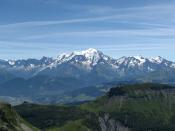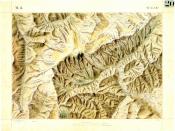The words on the Halifax Herald front page on Friday, December 7, 1917 read, "Halifax wrecked! More than one thousand are killed in this city, many thousands are injured and homeless!" This was describing what the world would later come to know as the 2nd largest, most violent, man-made explosion after the atomic bomb. It is also one of the most silent tragedies, seeing as how little word is spoken of it today. For many Canadians on that most unpleasant morning, it marked "the day the war came home."
There are a number of applicable areas of interaction. As a result of Homo Fabor, or the creation by man, one of the ships, The Mont Blanc contained 3000 tons of deadly explosives in its cargo. These bombs were created by man to destroy other lives. Destroy others it did, but not at the right time, or intended location. The entire explosion caused terrible effects on the environment, another applicable area.
An entire city, and its environmental resources and growth was abolished. The health of the survivors was poor, and many died. This is most applicable to Health and Social education in the areas of interaction.
On the morning of December 1917, It was a bright, chilly Thursday Halifax Harbour. Men were leaving to work, saying farewell to their families. Everything was as customary as usual, and no one suspected the events about to unfold.
The two vessels awaiting the opening of the harbour that morning was the Imo, and the Mont Blanc. The Imo, a relief ship, had arrived in Halifax Harbour from Rotterdam. She was a Norwegian 4 mast tramp steamer, weighing 5043 tons, and measuring 420.7 feet long. On that most fateful day, the pilot William Hayes steered the ship through the narrow parts of the harbour.


